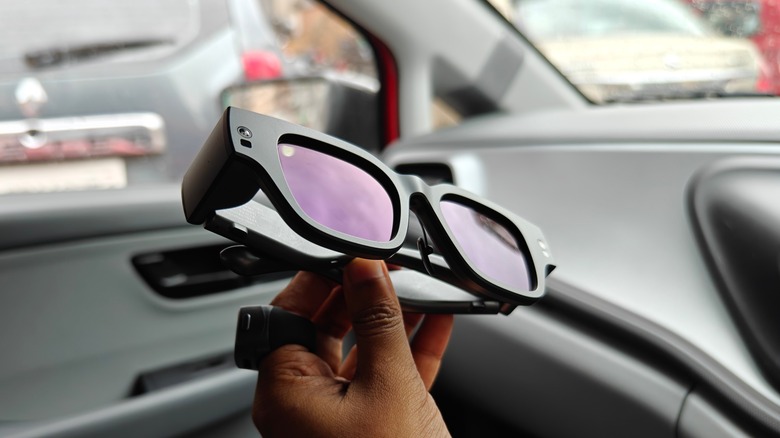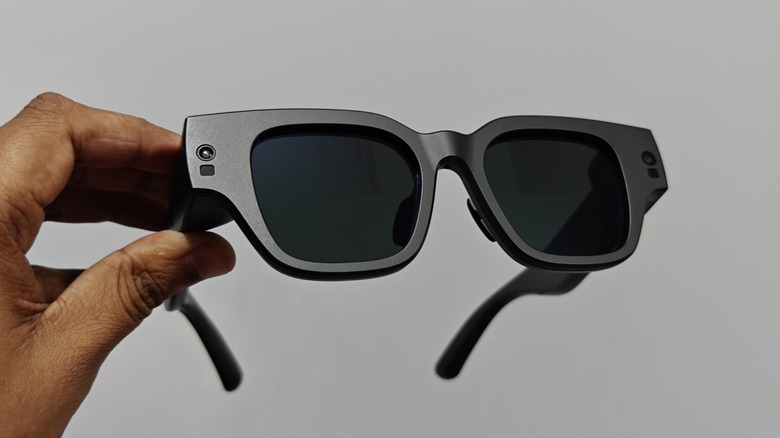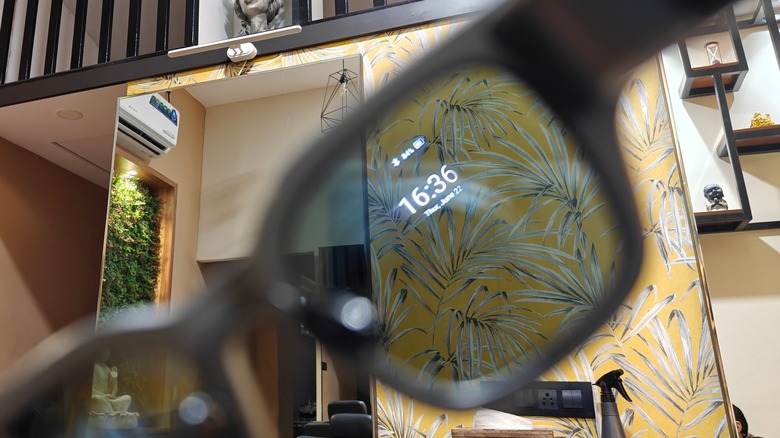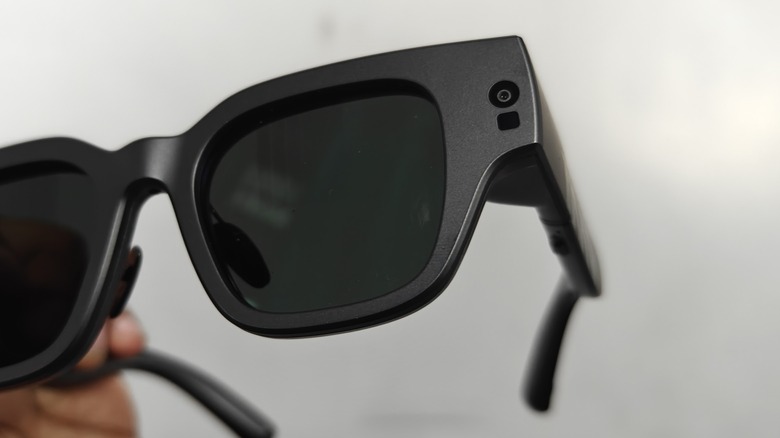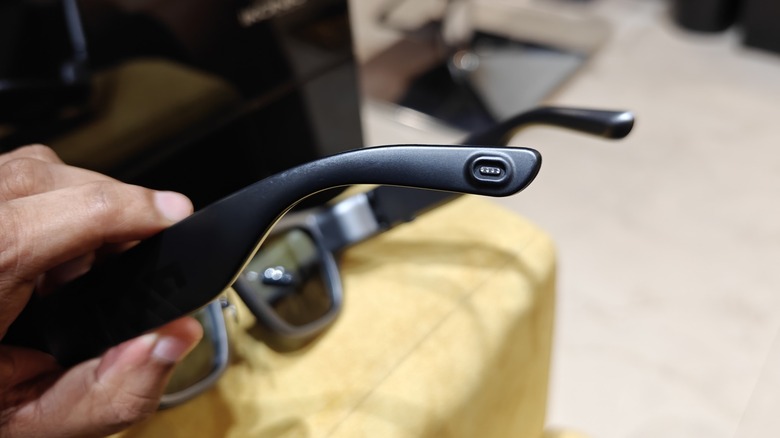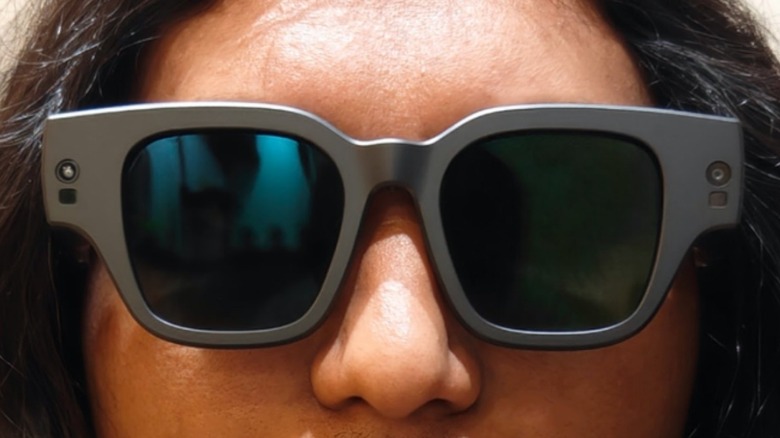Inmo Air2 Review: Affordable AR Glasses With A Few Key Flaws
- Impressive engineering
- Affordable for AR glasses
- Relatively lightweight
- Insufficient display resolution
- Uncomfortable default nosepad
- Limited software experience
Augmented reality is all the rage right now. We've been hearing about mixed reality for years now, and it has frequently been a trope in movies and TV series set somewhere in the future. However, with the currently increasing hype, technological advancements, as well as giants like Apple entering the space, it may be safe to say that the age of AR is upon us.
While the failed Google Glass was ahead of its time, looking back, it seems like a great implementation of AR glasses that you could wear on the go. Many have since then tried to emulate that concept one way or another. The latest entrant in the space is Shenzhen-based INMO, a Chinese company that is launching the second iteration of its light AR glasses — the INMO Air2.
INMO sent us a unit of the INMO Air2 for the purposes of this review. This version of the device works as sunglasses — there are also alternate lenses available that we did not review here.
Hardware basics
INMO Air2 is a pair of wireless AR glasses. It runs on a four-core 1.8GHz ZiGuang ZhanRui AI chip, backed by 2GB of RAM and 32GB of RAM. The Air2 is running IMOS 2.0, which is INMO's AR operating system. While not officially confirmed, it seems to be a customized version of Android. You get a Micro OLED display with a resolution of 640 x 400 pixels. While the Air2 is completely wireless glasses, it does not come with cellular connectivity. You do, however, get Wi-Fi, and Bluetooth 5.0, as well as GPS. All of this is powered by a 500mAh battery.
In addition to having touch gestures with capacitive areas on the side of the glasses, NMO also includes a controller ring in the box. The Air2 charge via a proprietary pogo pin interface, while the ring charges via USB-C. The INMO Air2 will go on sale via crowdfunding on Kickstarter, with an early-bird starting price of $599 for the first 1000 orders. The next 1000 orders will go for $649. INMO is yet to reveal the final retail price of the Air2.
Design: Impressive engineering, hit-or-miss aesthetics
Glasses are an incredibly subjective accessory, and as such, it's hard to make an objective call on whether the INMO Air2 AR glasses look great. It's safe to say, however, that the glasses don't look bad. The look isn't for everybody, and the sides of the glasses are thick enough to make them stand out from your regular sunglasses.
What's impressive is the engineering. When you wear these glasses and use them for the first time, you'll be impressed with how well-made it is. The Air2 weighs less than 100 grams (around 3.5 ounces) and is built rather solidly. The build is mostly plastic and aluminum, which is how the low weight has been achieved.
The pre-installed nose pad is the only issue we had with the build. It's very uncomfortable, but thankfully, INMO has made it user replaceable. You have a tiny screw underneath to remove the nose pad. INMO says it will include three different nose pads in the box, but unfortunately, our review unit didn't come with any spares. So on the comfort front, the default nose pad is a miss. The Air2 was more comfortable with it being removed entirely, although we have hopes that the nose pad replacements INMO will offer will be better than the default one.
The light weight also means that the INMO Air2 doesn't hurt your ears over extended periods of use. If you're looking at these glasses as a pair you'd like to replace your regular glasses with, INMO has made provisions for that as well. You get a myopia adjustment kit which can be added to these glasses after getting your corrective lenses installed.
Screens
AR glasses are essentially screens you can wear, and the INMO Air2 has a micro-OLED display arranged in what's called a vertical array optical waveguide. What this means for you is that you get what looks like a translucent projector screen floating in front of your eyes.
In terms of resolution, you get a 640 x 400 pixels display. It runs in binoculars mode, which means both the right and left sides of the glasses have the screen being projected. The screen doesn't cover the entirety of these glasses, and as such, it's comfortable enough to be worn while you're doing something else, unlike VR glasses. The screens are translucent enough to act as a heads-up display.
Are these glasses practical for all purposes INMO promises, though? Not quite. The glasses are pretty good for watching video content with the in-built YouTube TV app. However, the screen resolution is far from good enough for text. While using the screen mirroring function, our tests found it more straining to the eyes than it really should be.
Media consumption on these glasses is decent, but the low resolution isn't great for stuff that mostly uses text. The screen brightness is best when set to 60%. Keeping it any brighter results in an unpleasant flare at the corners of the display area.
The INMO software experience
For the most part, the software on the INMO Air2 is designed to take advantage of the screens well. The home screen greets you with a typical Android launcher, with an app drawer available. The app list is not bad but definitely could have been a lot better. INMO also has an app store, but the store seems to be empty for now.
You get YouTube and TikTok TV apps pre-loaded, and they work well. The experience is pretty close to watching it on an actual TV, so there are no complaints there. INMO has also thrown in a few of its own apps. The INMO Meeting app is a nice addition, but could've easily been Zoom, or another widely-used meeting app. The Documents app was pretty decent with text files, with options to increase the text size. There's also a translation app, and a dash of AI with INMOGPT, which is the company's AI assistant.
While these two apps seem fine, the voice detection was poor, so the user experience with this particular side of the software wasn't great. Thankfully, you can use some functionality with the INMOLens app that you can install on your phone. INMOGPT uses GPT3, which means you can expect it to do the same stuff as the last-gen AI assistants.
The INMOLens app also has a navigation applet within itself, which can project maps onto your glasses when you use it. It appears you need to use the phone app to use this feature, and it cannot be opened from the glasses themselves. While it seems fine on paper, it's not as good as the industry standard navigation apps, with poor ETA calculations, among other issues. Ideally, we'd like to see Google Maps or a popular alternative.
Performance, audio, and cameras
Despite limited functionality and a not-quite-complete software experience, INMO Air2 did rather well during our testing. It launched apps pretty quickly and was able to keep up the performance through longer usage periods. During periods of slightly heavy usage, the thicker end of the left stem of the glasses, which presumably houses the battery and/or the chipset, gets warm to the touch. The heat isn't enough to dissipate to the parts that touch your face, though, so there are no comfort issues on that front.
What was impressive about the performance was the controls that the INMO Air2 comes with. You can use touch gestures on the arms of the glasses for navigation. There are also two buttons on the lower side of the arms that also aid in controlling the glasses. The gestures worked rather well, but you would rather avoid them, INMO also includes a controller ring in the box. It's rather intuitive but comes with the hassle of additional charging, which is why gestures end up being the easier solution.
The INMO Air2 has well-positioned speakers that fire the audio downwards toward your ears. The implementation is pretty good, and you're able to hear the audio pretty clearly. If you like high volumes, however, these speakers won't maintain your privacy as well as a pair of earbuds. The audio quality is just fine.
The camera experience is also pretty average. While it worked flawlessly, the quality is on par with low-budget phones. The camera isn't high-quality enough to be a selling point of this device. Rather, it's just an addition that you can use in a pinch. This is very much unlike the Snapchat AR Spectacles which have a lot of focus around the camera experience.
Battery life and charging
The battery life of the INMO Air2 is pretty solid for the size of the device but not sufficient enough overall. A single charge lasted about 75-120 minutes during testing. Some usage scenarios may get you extra time. While these figures aren't particularly great, the glasses should be able to get you through a few hours outdoors unless you're using them constantly.
The INMO Air2 charges via a proprietary pogo pin interface. The charging isn't too quick and takes about 115 minutes to charge fully and about 45 minutes for a 50% charge. The numbers are acceptable for a device this small but could have been better. INMO is coming in with a promise of 5.5 hours of continuous use, but we've not seen these glasses hitting that.
INMO also doesn't include a charging adapter in the box, but you get the proprietary cable. While convenient, the proprietary cable seems like a potential hassle in case you misplace it. A standardized charging interface would have been way better.
Should you buy the INMO Air2 AR glasses?
The INMO Air2 is an impressive piece of hardware, but it's not yet as market-ready as one would hope. The software experience is limited, and there are no apps in the app store yet. if you're to use it with what you get out of the box, the software doesn't have enough of a utility factor.
The wearable computer appeal is there, but the screen isn't high resolution enough for that to be a practical use case. The INMO Air2 is, however, an excellent portable media consumption device. It seems like a solid pair of glasses you can wear on the go. If INMO can sort out the app ecosystem, particularly the use of Google Apps for navigation, these glasses will be a great value for the cash.
At the $599 early bird price on Kickstarter, it is considerably cheaper than the bigwigs, like the Apple Vision Pro. However, the appeal is limited so far. If you want a cool pair of glasses that you can watch YouTube and TikTok on and like the look of these, then the INMO Air2 is definitely worth considering.
For everybody else, it might be better to wait and see if the software experience on the INMO Air2 improves.

